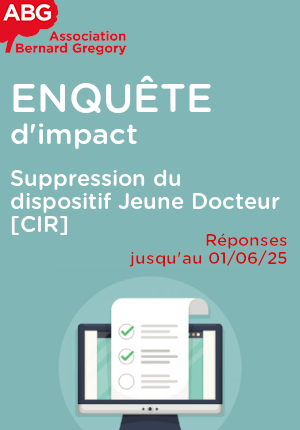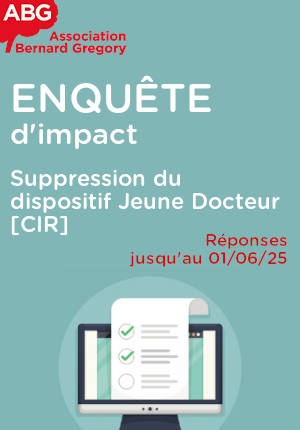Prédictions d'interactions protéiques hôte/pathogène via l'utilisation des outils de l'intelligence artificielle : vers l'identification de nouveaux déterminants de l'immunité naturelle des plantes // Prediction of Host-Pathogen Protein Interactions Using
|
ABG-130641
ADUM-63554 |
Thesis topic | |
| 2025-04-08 | Public funding alone (i.e. government, region, European, international organization research grant) |
Université Clermont Auvergne
AUBIERE - France
Prédictions d'interactions protéiques hôte/pathogène via l'utilisation des outils de l'intelligence artificielle : vers l'identification de nouveaux déterminants de l'immunité naturelle des plantes // Prediction of Host-Pathogen Protein Interactions Using
- Biology
Gènes de sensibilité, Effecteurs de pathogénie, AlphaFold, Bioinformatique
Susceptibility genes, Pathogenic effectors, AlphaFold, Bioinformatics
Susceptibility genes, Pathogenic effectors, AlphaFold, Bioinformatics
Topic description
UMR GDEC 1095 Génétique, Diversité et Écophysiologie des Céréales, UCA/INRAE
Directeur de thèse: Ludovic Bonhomme (PU-HDR) ludovic.bonhomme@uca.fr
Prédictions d'interactions protéiques hôte/pathogène via l'utilisation des outils de l'intelligence artificielle : vers l'identification de nouveaux déterminants de l'immunité naturelle des plantes
Le potentiel de l'intelligence artificielle pour prédire les interactions moléculaires hôte/pathogène offre de nouvelles opportunités pour mieux comprendre les mécanismes de l'immunité naturelle des plantes. Encore largement sous-exploitée pour analyser les liens entre effecteurs de pathogénie et protéines cibles chez la plante (facteurs de sensibilité), l'utilisation de ces outils de prédiction de structures protéiques et d'interactions physiques ouvre la voie à des approches exploratoires inédites pour identifier de nouveaux déterminants de la sensibilité des plantes aux maladies. Dans le cadre de son étude des éléments clefs contrôlant la sensibilité du blé à l'agent pathogène Fusarium graminearum, l'équipe IPM a généré un corpus de données multi-omiques uniques (Rocher et al., 2024). L'objectif de ce projet de Thèse vise à modéliser la structure 3D du répertoire complet d'effecteurs de pathogénie identifiés chez F. graminearum, ainsi que celle des facteurs de sensibilité du blé et d'identifier les structures conservées chez des espèces apparentées. Des analyses de docking in silico seront mises en œuvre pour prédire les interacteurs moléculaires entre l'hôte et l'agent pathogène et identifieront les motifs structuraux clés de leur affinité. Des mutations seront simulées pour tester leur impact sur ces interactions physiques et des approches in vivo seront menées pour valider ces prédictions.
Rocher et al. (2024). Integrative systems biology of wheat susceptibility to F. graminearum uncovers a conserved gene regulatory network and identifies master regulators targeted by fungal core effectors. BMC Biology 22:53.
------------------------------------------------------------------------------------------------------------------------------------------------------------------------
------------------------------------------------------------------------------------------------------------------------------------------------------------------------
UMR GDEC 1095 Genetics, Diversity, and Ecophysiology of Cereals, UCA/INRAE
Thesis Supervisor: Ludovic Bonhomme (PU-HDR) ludovic.bonhomme@uca.fr
Prediction of Host-Pathogen Protein Interactions Using Artificial Intelligence Tools: Towards the Identification of New Determinants of Plant Natural Immunity
The potential of artificial intelligence to predict host-pathogen molecular interactions opens new avenues for understanding the mechanisms underlying plant natural immunity. Still largely underutilized for analyzing the relationships between pathogenic effectors and plant target proteins (i.e., susceptibility factors), these protein structure and interaction prediction tools pave the way for innovative exploratory approaches to identifying new determinants of plant disease susceptibility. As part of its research on key factors controlling wheat susceptibility to the pathogen Fusarium graminearum, the IPM team has generated a unique multi-omics dataset (Rocher et al., 2024). This PhD project aims to model the 3D structure of the complete repertoire of F. graminearum pathogenic effectors, as well as wheat susceptibility factors, while identifying conserved structural features in related species. In silico docking analyses will be conducted to predict molecular interactions between the host and pathogen, pinpointing key structural motifs driving their affinity. Simulated mutations will assess their impact on these physical interactions, and in vivo approaches will be implemented to validate these predictions.
Rocher et al. (2024). Integrative systems biology of wheat susceptibility to F. graminearum uncovers a conserved gene regulatory network and identifies master regulators targeted by fungal core effectors. BMC Biology 22:53.
------------------------------------------------------------------------------------------------------------------------------------------------------------------------
------------------------------------------------------------------------------------------------------------------------------------------------------------------------
Début de la thèse : 01/10/2025
Directeur de thèse: Ludovic Bonhomme (PU-HDR) ludovic.bonhomme@uca.fr
Prédictions d'interactions protéiques hôte/pathogène via l'utilisation des outils de l'intelligence artificielle : vers l'identification de nouveaux déterminants de l'immunité naturelle des plantes
Le potentiel de l'intelligence artificielle pour prédire les interactions moléculaires hôte/pathogène offre de nouvelles opportunités pour mieux comprendre les mécanismes de l'immunité naturelle des plantes. Encore largement sous-exploitée pour analyser les liens entre effecteurs de pathogénie et protéines cibles chez la plante (facteurs de sensibilité), l'utilisation de ces outils de prédiction de structures protéiques et d'interactions physiques ouvre la voie à des approches exploratoires inédites pour identifier de nouveaux déterminants de la sensibilité des plantes aux maladies. Dans le cadre de son étude des éléments clefs contrôlant la sensibilité du blé à l'agent pathogène Fusarium graminearum, l'équipe IPM a généré un corpus de données multi-omiques uniques (Rocher et al., 2024). L'objectif de ce projet de Thèse vise à modéliser la structure 3D du répertoire complet d'effecteurs de pathogénie identifiés chez F. graminearum, ainsi que celle des facteurs de sensibilité du blé et d'identifier les structures conservées chez des espèces apparentées. Des analyses de docking in silico seront mises en œuvre pour prédire les interacteurs moléculaires entre l'hôte et l'agent pathogène et identifieront les motifs structuraux clés de leur affinité. Des mutations seront simulées pour tester leur impact sur ces interactions physiques et des approches in vivo seront menées pour valider ces prédictions.
Rocher et al. (2024). Integrative systems biology of wheat susceptibility to F. graminearum uncovers a conserved gene regulatory network and identifies master regulators targeted by fungal core effectors. BMC Biology 22:53.
------------------------------------------------------------------------------------------------------------------------------------------------------------------------
------------------------------------------------------------------------------------------------------------------------------------------------------------------------
UMR GDEC 1095 Genetics, Diversity, and Ecophysiology of Cereals, UCA/INRAE
Thesis Supervisor: Ludovic Bonhomme (PU-HDR) ludovic.bonhomme@uca.fr
Prediction of Host-Pathogen Protein Interactions Using Artificial Intelligence Tools: Towards the Identification of New Determinants of Plant Natural Immunity
The potential of artificial intelligence to predict host-pathogen molecular interactions opens new avenues for understanding the mechanisms underlying plant natural immunity. Still largely underutilized for analyzing the relationships between pathogenic effectors and plant target proteins (i.e., susceptibility factors), these protein structure and interaction prediction tools pave the way for innovative exploratory approaches to identifying new determinants of plant disease susceptibility. As part of its research on key factors controlling wheat susceptibility to the pathogen Fusarium graminearum, the IPM team has generated a unique multi-omics dataset (Rocher et al., 2024). This PhD project aims to model the 3D structure of the complete repertoire of F. graminearum pathogenic effectors, as well as wheat susceptibility factors, while identifying conserved structural features in related species. In silico docking analyses will be conducted to predict molecular interactions between the host and pathogen, pinpointing key structural motifs driving their affinity. Simulated mutations will assess their impact on these physical interactions, and in vivo approaches will be implemented to validate these predictions.
Rocher et al. (2024). Integrative systems biology of wheat susceptibility to F. graminearum uncovers a conserved gene regulatory network and identifies master regulators targeted by fungal core effectors. BMC Biology 22:53.
------------------------------------------------------------------------------------------------------------------------------------------------------------------------
------------------------------------------------------------------------------------------------------------------------------------------------------------------------
Début de la thèse : 01/10/2025
Funding category
Public funding alone (i.e. government, region, European, international organization research grant)
Funding further details
Concours pour un contrat doctoral
Presentation of host institution and host laboratory
Université Clermont Auvergne
Institution awarding doctoral degree
Université Clermont Auvergne
Graduate school
65 Sciences de la Vie, Santé, Agronomie, Environnement
Candidate's profile
Master 2 en Bioinformatique ou en Biologie Végétale
Expérience dans l'utilisation des outils de prédictions structurales et intérêt pour la Biologie végétale souhaitée
Bonnes compétences en analyse de données
Master's degree in Bioinformatics or in Plant Biology, or equivalent Experience in the use of AI tools for structure predictions and interest in plant biology and pathology. Good skills in complex data analysis
Master's degree in Bioinformatics or in Plant Biology, or equivalent Experience in the use of AI tools for structure predictions and interest in plant biology and pathology. Good skills in complex data analysis
2025-06-20
Apply
Close
Vous avez déjà un compte ?
Nouvel utilisateur ?
More information about ABG?
Get ABG’s monthly newsletters including news, job offers, grants & fellowships and a selection of relevant events…
Discover our members
 Aérocentre, Pôle d'excellence régional
Aérocentre, Pôle d'excellence régional  Ifremer
Ifremer  ASNR - Autorité de sûreté nucléaire et de radioprotection - Siège
ASNR - Autorité de sûreté nucléaire et de radioprotection - Siège  SUEZ
SUEZ  Groupe AFNOR - Association française de normalisation
Groupe AFNOR - Association française de normalisation  ADEME
ADEME  TotalEnergies
TotalEnergies  CESI
CESI  Institut Sup'biotech de Paris
Institut Sup'biotech de Paris  ANRT
ANRT  MabDesign
MabDesign  Laboratoire National de Métrologie et d'Essais - LNE
Laboratoire National de Métrologie et d'Essais - LNE  CASDEN
CASDEN  Généthon
Généthon  ONERA - The French Aerospace Lab
ONERA - The French Aerospace Lab  PhDOOC
PhDOOC  MabDesign
MabDesign  Nokia Bell Labs France
Nokia Bell Labs France  Tecknowmetrix
Tecknowmetrix







